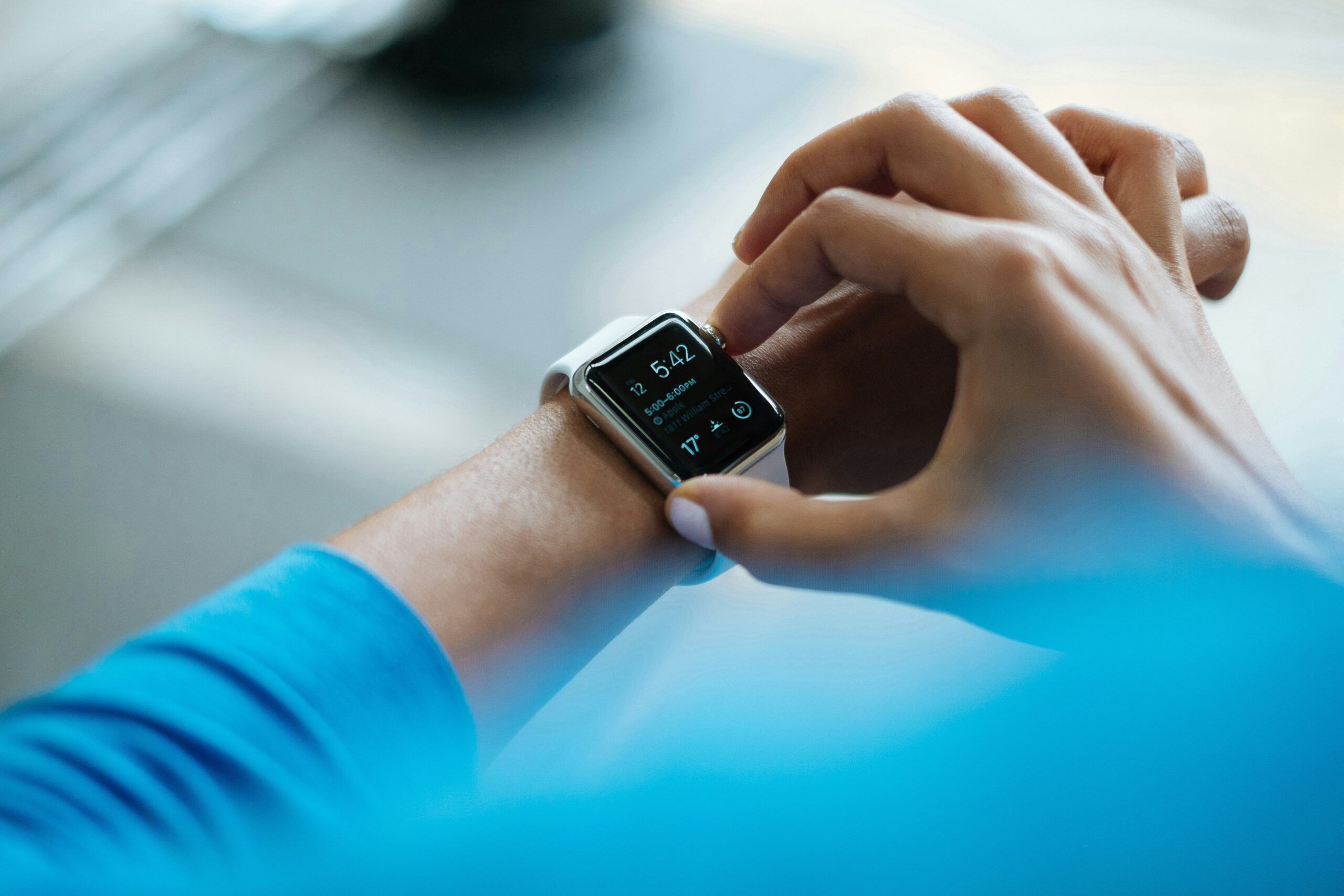Have you ever struggled with using technology in your day-to-day life? Don’t worry, we’ve got you covered with our article “Tech Tips and Tricks for Everyday Use”. In this informative piece, we will provide you with essential tech tips that will make your life easier and more efficient. Whether it’s learning how to navigate through your smartphone or discovering hidden features on your computer, our friendly advice will empower you to make the most out of your devices. So get ready to level up your tech skills and unlock a world of possibilities!
Productivity Tips
Keyboard Shortcuts for Faster Navigation
One of the best ways to increase your productivity is by utilizing keyboard shortcuts. Instead of reaching for your mouse and clicking through menus, you can simply press a combination of keys to perform various actions. For example, in most applications, you can use “Ctrl + C” to copy selected text, and “Ctrl + V” to paste it. Learning and memorizing these shortcuts can significantly speed up your workflow and save you precious time.
Organizing Email Inbox with Filters and Labels
If you find yourself drowning in a cluttered email inbox, it’s time to take control and organize it more efficiently. Most email providers offer filters and labels, which allow you to automatically sort incoming emails into specific folders or categories. For example, you can create a filter that automatically moves all emails from your boss into a designated “Priority” folder. Additionally, labeling emails with relevant tags can make searching and sorting through your inbox a breeze.
Utilizing Productivity Apps
There is a wide range of productivity apps available that can help you streamline your tasks and stay organized. From to-do list managers to note-taking apps, these tools can assist you in prioritizing your work, setting reminders, and even collaborating with team members. Some popular productivity apps include Todoist, Evernote, Trello, and Slack. Explore different options and find the ones that suit your needs best to boost your productivity to new heights.
Time Management Techniques
Effective time management is crucial for maximizing your productivity. One popular technique is the Pomodoro Technique, which involves working in focused bursts of 25 minutes, followed by a short break. This method helps you stay focused and avoid burnout. Another technique is the Eisenhower Matrix, which helps prioritize tasks by dividing them into four categories: urgent and important, important but not urgent, urgent but not important, and neither urgent nor important. By using these techniques, you can better manage your time and accomplish more in your day.
Internet Tips
Clearing Browser Cache and Cookies
Over time, your web browser collects data such as images, files, and website cookies, which can slow down your browsing experience. Clearing your browser cache and cookies periodically can help speed up your internet browsing. It also ensures that you’re accessing the latest version of websites and prevents any potential issues caused by outdated or corrupted data.
Using Incognito Mode for Private Browsing
When you want to browse the internet without leaving traces of your browsing history, using the incognito mode is the way to go. Most web browsers offer this feature, which allows you to browse privately without storing any search history, cookies, or temporary files. It’s especially useful if you’re using a public computer or if you’re researching something sensitive that you don’t want others to discover.
Bookmarking Important Websites
Bookmarking is a handy feature that allows you to save and organize your favorite websites for quick and easy access. By bookmarking important websites, you won’t have to remember or search for URLs every time you want to visit them. You can create folders to categorize your bookmarks, making it even more efficient to find the websites you need.
Speeding up Internet Connection
If you’re experiencing slow internet speeds, there are a few things you can do to try and improve it. First, you can try restarting your modem and router. Sometimes, a simple reset can resolve connectivity issues. You can also try moving closer to your router if you’re using a Wi-Fi connection. Additionally, limiting the number of connected devices or closing bandwidth-intensive applications, such as streaming services or file downloads, can help speed up your internet connection.

This image is property of images.pexels.com.
Mobile Device Tips
Increasing Battery Life
Battery life is a common concern for mobile device users. To prolong your battery life, you can adjust certain settings on your device. Lowering the screen brightness, disabling unnecessary background processes and notifications, and closing unused apps can all help conserve battery power. It’s also a good idea to turn on battery-saving mode when your device’s battery level is running low.
Customizing Home Screen and Widgets
Customizing your mobile device’s home screen can help you personalize it and make it more efficient for your needs. You can rearrange app icons and group them into folders based on category or frequency of use. On certain devices, you can also add widgets to your home screen, which provide quick access to specific information or features of apps without needing to open them.
Enabling Two-Factor Authentication
Security is of utmost importance when it comes to mobile devices. Enabling two-factor authentication adds an extra layer of security to your device and accounts. This feature requires you to enter a verification code, usually sent to your mobile device, in addition to your password when logging into your accounts. By enabling two-factor authentication, you greatly reduce the risk of unauthorized access to your personal data.
Managing App Permissions
When installing new apps on your mobile device, it’s important to review and manage the permissions they require. Some apps may request access to sensitive information or features that are not necessary for their functionality. By reviewing and denying unnecessary permissions, you can protect your privacy and ensure that apps are only accessing what they need to function properly.
Security Tips
Creating Strong Passwords
Creating strong, unique passwords is essential for protecting your online accounts. A strong password should be at least eight characters long, include a combination of letters (both uppercase and lowercase), numbers, and special characters. Avoid using commonly used passwords or personal information that can be easily guessed. Consider using a password manager to securely store and generate complex passwords for different accounts.
Using VPN for Secure Internet Access
When connecting to the internet, using a virtual private network (VPN) adds an additional layer of security. A VPN encrypts your internet connection, making it difficult for hackers to intercept your data. It also allows you to access websites and services that may be restricted in your region. There are many VPN providers available, so be sure to choose a reputable one that values your privacy.
Protecting Personal Information Online
In the digital age, protecting your personal information is paramount. Be cautious about sharing sensitive information online, such as your full name, address, phone number, or Social Security number. Avoid clicking on suspicious links or downloading attachments from unknown sources, as they can contain malware or phishing attempts. Regularly review and adjust your privacy settings on social media platforms to control the visibility of your personal information.
Enabling Two-Step Verification
Enabling two-step verification, also known as two-factor authentication, adds an extra layer of security to your online accounts. When logging in, you will be required to provide not only your password but also a unique verification code sent to your registered mobile device or email address. This helps protect your accounts from unauthorized access, even if someone manages to obtain your password.

This image is property of images.pexels.com.
Hardware Tips
Cleaning Laptop/Desktop and Peripherals
Regularly cleaning your laptop/desktop and peripherals can help maintain their performance and extend their lifespan. Use a soft, lint-free cloth to wipe away dust and dirt from the surface of your device. You can also use compressed air or a small brush to clean between keyboard keys. Pay attention to the vents and fans, as they can accumulate dust, which can lead to overheating.
Extending the Lifespan of Batteries
Batteries are an essential component of many devices, and proper care can extend their lifespan. Avoid fully draining your device’s battery before recharging. Instead, aim to keep the battery level between 20% and 80%. If you’re going to store a battery for an extended period, ensure it’s at around 50% charge. Additionally, avoid exposing your device to extreme temperatures, as it can negatively affect the battery’s performance.
Optimizing SSD Performance
If you have a device with a solid-state drive (SSD), optimizing its performance can help ensure it runs smoothly. Avoid filling your SSD to its maximum capacity, as this can slow down its performance. Regularly update the firmware of your SSD to take advantage of any performance improvements or bug fixes provided by the manufacturer. Finally, defragmenting your SSD is unnecessary, as the data is not physically stored in a fragmented way like with traditional hard drives.
Preventing Overheating
Overheating is a common issue, especially for laptops and desktop computers. To prevent overheating, ensure that your device’s vents are not obstructed by dust or other objects. Use your device on a hard, flat surface to allow proper airflow. Consider investing in a laptop cooling pad or desktop fan to help dissipate heat. If you notice your device is consistently overheating, you may need to clean the inside of your device or consult a professional for assistance.
File Management Tips
Backing Up Important Files
Backing up important files is crucial to protect against data loss. There are several methods you can use to back up your files. One option is to manually copy your files onto an external hard drive or a cloud storage service regularly. Another option is to use backup software that automatically takes care of backing up your files at scheduled intervals. Whichever method you choose, make sure you have multiple backups in different locations to ensure redundancy.
Organizing Files and Folders
Having a well-organized file and folder system can make it easier and faster to locate specific files when you need them. Consider creating a logical hierarchy of folders based on categories or projects. Use clear and descriptive file names, and consider adding tags to files for easier searching. Regularly remove any unnecessary files or folders to keep your file system streamlined and clutter-free.
Searching for Lost or Deleted Files
Losing or accidentally deleting a file can be a nightmare, but all hope is not lost. When searching for lost or deleted files, start by checking the Recycle Bin or Trash, as files are often sent there instead of being permanently deleted. If you still can’t find the file, you can use file recovery software, such as Recuva or EaseUS Data Recovery Wizard, to scan your storage device for recoverable files. It’s important to act quickly since the chances of successful recovery decrease the longer you wait.
Utilizing Cloud Storage Services
Cloud storage services offer a convenient way to store and access your files from anywhere with an internet connection. Services like Google Drive, Dropbox, and OneDrive provide a certain amount of free storage, with the option to upgrade for more space. With cloud storage, you can easily synchronize files between multiple devices, share files with others, and access your files on the go.

This image is property of images.pexels.com.
Troubleshooting Tips
Restarting Devices for Resolving Common Issues
When encountering common issues with your devices, a simple restart can often resolve them. Restarting your computer, laptop, smartphone, or tablet clears out temporary files and resets various processes, which can help fix glitches or freezes. If you’re experiencing issues with a specific program, try closing it and reopening it. The “turn it off and on again” advice may sound cliché, but it’s surprisingly effective.
Updating Software and Drivers
Keeping your software and drivers up to date is crucial for optimal performance and security. Software updates often include bug fixes, performance improvements, and new features. Similarly, driver updates can provide compatibility enhancements and improved functionality for hardware devices. Enable automatic updates whenever possible, and regularly check for updates manually to ensure you’re running the latest versions.
Troubleshooting Internet Connection Problems
If you’re facing internet connection problems, there are a few troubleshooting steps you can take. First, check if other devices are also experiencing connectivity issues. If they are, the problem may lie with your internet service provider. Restarting your modem and router can often resolve temporary connectivity issues. Another step is to check your device’s network settings, ensuring that you’re connected to the correct network and that airplane mode is turned off.
Running System Maintenance Tools
Running system maintenance tools on your devices can help keep them running smoothly. These tools, such as disk cleanup, disk defragmenter, and system file checker, can identify and fix various issues that can impact your device’s performance. Use these tools periodically to remove unnecessary files, optimize disk space, and repair system files. However, before running any system maintenance tool, it’s recommended to back up your important files, just in case.
Social Media and Communication Tips
Managing Privacy Settings on Social Media
Social media platforms offer a range of privacy settings to control who can see your posts and personal information. Take some time to review and adjust these settings to ensure you’re comfortable with the level of privacy you have. Be mindful of the information you share publicly, and consider limiting access to personal details, such as your birthdate or home address, to trusted friends only.
Avoiding Phishing and Online Scams
Phishing attempts and online scams are common, and falling victim to them can have serious consequences. Be cautious when clicking on links in emails or messages, especially if they appear suspicious or come from unknown senders. Avoid sharing personal information or financial details through unsecured channels. If something seems too good to be true, it probably is. Stay vigilant and trust your instincts to protect yourself from online scams.
Using Video Conferencing Tools
Video conferencing has become an essential tool for remote work and staying connected with loved ones. Platforms like Zoom, Microsoft Teams, and Google Meet offer easy-to-use video conferencing features. Familiarize yourself with the basic controls, such as muting/unmuting yourself and adjusting your video settings. Consider using virtual backgrounds to add some fun or maintain privacy during video calls. Additionally, test your audio and video setup beforehand to avoid technical difficulties during important meetings or conversations.
Improving Digital Etiquette
When communicating online, it’s important to practice good digital etiquette to ensure effective and respectful interactions. Use proper grammar and spelling, avoid using all caps (which can be interpreted as shouting), and be mindful of your tone. Respect other people’s opinions and avoid engaging in online arguments or spreading negativity. Remember that your digital footprint can impact your personal and professional reputation, so always think before you post or comment.
Multimedia Tips
Organizing and Managing Digital Photos
With the advent of digital photography, managing and organizing your digital photos has become essential. Start by creating folders based on occasions or dates to keep your photos organized. Consider using photo management software, such as Google Photos or Adobe Lightroom, to automatically categorize and tag your photos. You can also add descriptions or keywords to individual photos for easy searching. Regularly back up your photos to prevent permanent loss.
Editing and Enhancing Images
Whether you’re a professional or an amateur photographer, image editing and enhancing tools can help take your photos to the next level. Software like Adobe Photoshop or Lightroom offers a wide range of editing features, from adjusting brightness and contrast to removing unwanted elements or blemishes. There are also many free or more user-friendly alternatives available, such as GIMP or Canva, which provide basic editing capabilities.
Creating and Editing Videos
Creating and editing videos has become increasingly accessible, even for beginners. Platforms like Adobe Premiere Pro, Final Cut Pro, or iMovie offer comprehensive video editing tools for professionals and enthusiasts. For simpler editing, apps like Quik or Windows Movie Maker provide basic features and templates. Add transitions, effects, captions, and soundtracks to enhance your videos and create engaging content.
Discovering New Music and Podcasts
With the vast amount of music and podcasts available, discovering new content can sometimes be overwhelming. Streaming services like Spotify, Apple Music, or YouTube Music offer personalized recommendations based on your music preferences. Explore different genres, playlists, and curated content to broaden your musical horizons. Similarly, podcast platforms such as Apple Podcasts or Spotify Podcasts provide a wide range of topics and genres to match your interests.
Keyboard and Mouse Tips
Customizing Keyboard Shortcuts
In addition to the general keyboard shortcuts mentioned earlier, many applications allow you to customize their keyboard shortcuts to suit your needs. Open the settings or preferences of your chosen application and look for the options to customize keyboard shortcuts. Assign frequently used actions to easily accessible keys to optimize your workflow. This way, you can adapt the application to your personal preferences and work more efficiently.
Using Mouse Gestures for Efficient Navigation
If you frequently use a mouse, taking advantage of mouse gestures can greatly improve your navigation and workflow. Mouse gestures involve performing predefined movements while holding down a mouse button to trigger specific actions or commands. For example, you can configure a gesture to open a new tab in your web browser or to navigate backward or forward through your browsing history. Explore mouse gesture extensions or software for your specific mouse model to unlock this time-saving feature.
Utilizing Clipboard Managers
A clipboard manager is a handy tool that allows you to retain multiple copied items in memory. Instead of overwriting the previous copied item with a new one, a clipboard manager saves a history of your copied text, images, or files, which can be retrieved later. This can be incredibly useful when working on multiple tasks that require copying and pasting different items. Numerous clipboard manager applications are available for both Windows and Mac.
Increasing Typing Speed
Improving your typing speed can significantly boost your productivity. Practice regularly to build muscle memory and increase your typing accuracy and speed. There are numerous online platforms and typing tutor software available that provide lessons and exercises to help you improve your typing skills. Additionally, consider learning touch typing, where you type without looking at the keyboard, as it can greatly enhance your typing speed and efficiency over time.
Incorporating these tech tips and tricks into your daily routine can make your life easier, more efficient, and more secure. Whether it’s optimizing your productivity, enhancing your internet experience, or protecting your devices and personal information, these tips provide practical solutions to common tech-related challenges. Embrace the power of technology and leverage its full potential to enhance your everyday life.



